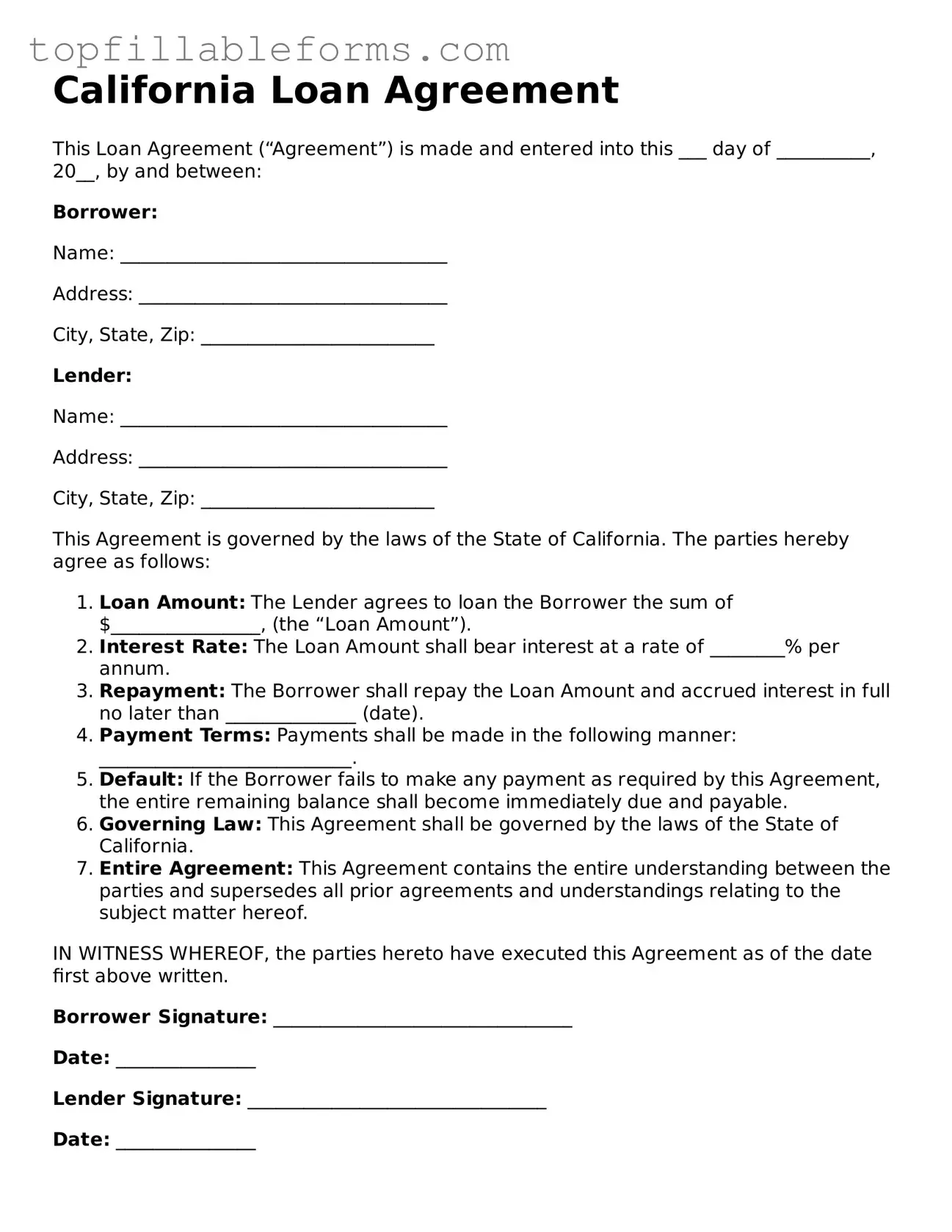California Loan Agreement
This Loan Agreement (“Agreement”) is made and entered into this ___ day of __________, 20__, by and between:
Borrower:
Name: ___________________________________
Address: _________________________________
City, State, Zip: _________________________
Lender:
Name: ___________________________________
Address: _________________________________
City, State, Zip: _________________________
This Agreement is governed by the laws of the State of California. The parties hereby agree as follows:
- Loan Amount: The Lender agrees to loan the Borrower the sum of $________________, (the “Loan Amount”).
- Interest Rate: The Loan Amount shall bear interest at a rate of ________% per annum.
- Repayment: The Borrower shall repay the Loan Amount and accrued interest in full no later than ______________ (date).
- Payment Terms: Payments shall be made in the following manner: ___________________________.
- Default: If the Borrower fails to make any payment as required by this Agreement, the entire remaining balance shall become immediately due and payable.
- Governing Law: This Agreement shall be governed by the laws of the State of California.
- Entire Agreement: This Agreement contains the entire understanding between the parties and supersedes all prior agreements and understandings relating to the subject matter hereof.
IN WITNESS WHEREOF, the parties hereto have executed this Agreement as of the date first above written.
Borrower Signature: ________________________________
Date: _______________
Lender Signature: ________________________________
Date: _______________
